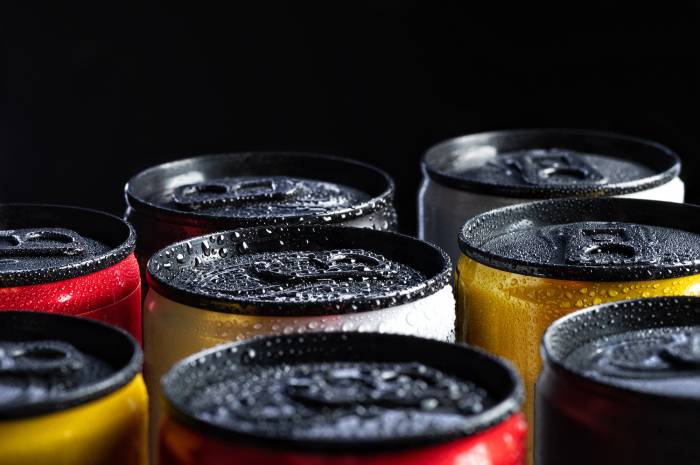Ready-To-Drink beverages outpace wine as younger consumers shift preferences in key global markets
Convenience, health trends, and innovative flavors drive rtd growth while traditional wine faces declining consumption and changing social habits
2025-09-04

The global beverage alcohol market has seen a significant shift in recent years, with ready-to-drink (RTD) products gaining ground at the expense of traditional wine categories. Since 2019, RTDs have steadily increased their market share in key countries such as the United States, Japan, Australia, and Canada. This growth has coincided with a decline in still wine consumption, according to data from IWSR, a leading source of beverage alcohol market analysis.
Between 2019 and 2024, the share of still wine in global beverage servings dropped from 11% to 10%, with projections indicating a further decrease to 9% by 2029. In contrast, RTDs doubled their share from 1% to 2% over the same period and are expected to maintain this level through 2029. The trend is most pronounced in markets where RTDs are already well established but is also emerging in countries like Germany.
Industry experts point to several factors driving the popularity of RTDs among younger legal drinking age consumers. Richard Halstead, COO of Consumer Insights at IWSR, notes that RTDs benefit from convenience, innovative flavors, and marketing that aligns with health and moderation trends. These products are often promoted by celebrities and are highly visible on social media platforms, making them more appealing to Gen Z consumers compared to traditional wine brands.
Sparkling wine has performed better than still wine in recent years but remains fragmented. Growth in Prosecco contrasts with declines in other sparkling segments. Sparkling wine is still largely associated with special occasions rather than everyday consumption.
The boundaries between RTDs and wine are also becoming less distinct. Wine spritzers, canned wine cocktails, and wine-infused RTDs are gaining traction, especially among Millennials. In South Africa, Mexico, and Germany, these hybrid products are performing well as consumers expand their beverage choices.
In the United States, RTD volumes grew at a compound annual growth rate (CAGR) of 14% from 2019 to 2024, while still wine declined by 4%. Projections for 2024 to 2029 show continued growth for RTDs at a CAGR of 1%, while still wine is expected to fall by another 4%. Sparkling wine is also forecasted to decline by 3% annually during this period. Halstead points out that wine sales volumes in the U.S., already lower than beer, have now been surpassed by RTDs due to changing consumer preferences toward moderation and health consciousness.
Japan mirrors this pattern. RTDs there grew at a CAGR of 5% between 2019 and 2024, while both still and sparkling wines declined. In both the U.S. and Japan, RTD volumes now exceed those of still and sparkling wines combined.
Canada is on a similar trajectory. IWSR forecasts that RTDs will surpass still wine in volume by 2027 and overtake both still and sparkling wines combined by 2028. The growth rate for RTDs is projected at 2% annually through 2029, while still wine is expected to decline by 2%. Research shows that Gen Z makes up a higher proportion of RTD drinkers compared to still wine drinkers in Canada.
Australia’s market reflects these trends as well. Although there was a slight dip in RTD volumes in 2024, the category grew at a CAGR of 4% between 2019 and 2024. Still wine declined by 3% annually during this time frame. Younger consumers in Australia are increasingly exploring other categories such as vodka and RTDs but remain open to new wine styles.
Even in Germany, where wine traditionally dominates over RTDs, the latter category grew at an annual rate of 11% between 2019 and 2024. Economic pressures and increased promotion of moderation have led German consumers to seek smaller servings at lower prices—conditions that favor RTDs over traditional wines.
Italy stands out as an exception. Here, both RTD and still wine volumes have declined since 2019, though sparkling wine has shown modest growth. Italian consumers show less interest in pre-mixed cocktails if still wine is unavailable.
The challenges for the wine industry are clear. Wine brands struggle to compete with the convenience and portability of RTDs, which require no corkscrews or glassware. Flavored innovation happens faster in the RTD segment than it does for traditional wines. Additionally, many RTDs are marketed as low-calorie or gluten-free options—attributes that appeal to health-conscious consumers—while wine is often perceived as higher in calories or sugar.
RTDs also have an advantage in retail channels and packaging design. Their strong presence online matches modern shopping habits, while eye-catching packaging encourages trial among younger buyers. Changing social habits have reduced formal dining occasions where wine once thrived; today’s consumers are looking for beverages suited to more casual settings.
Halstead suggests that for wine to remain competitive, it must adapt by offering more accessible packaging formats and simpler branding cues. Modern marketing strategies aimed at younger drinkers are essential for future growth. There are opportunities for innovation within the category—premium canned wines and flavored wine-based drinks have shown promise in some markets like Canada, where flavored sparkling wines grew rapidly between 2019 and 2024.
As consumer preferences continue to evolve worldwide, the ability of the wine industry to innovate and engage new generations will be critical in countering the rise of ready-to-drink beverages.
Founded in 2007, Vinetur® is a registered trademark of VGSC S.L. with a long history in the wine industry.
VGSC, S.L. with VAT number B70255591 is a spanish company legally registered in the Commercial Register of the city of Santiago de Compostela, with registration number: Bulletin 181, Reference 356049 in Volume 13, Page 107, Section 6, Sheet 45028, Entry 2.
Email: [email protected]
Headquarters and offices located in Vilagarcia de Arousa, Spain.